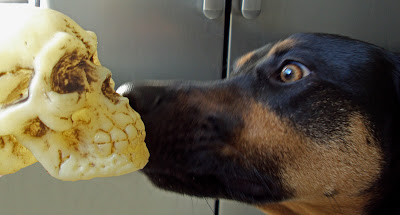 |
Two members of the San Francisco flock, from the L.A. Times
|
Loud, colorful, smart, and resourceful... What animal is more entwined with tropical daydreams than the parrot? Yet all over the world these birds are becoming common at backyard bird feeders.
Los Angeles, my home, is host to thousands of wild parrots. And their numbers are increasing. Almost daily I see flocks of amazons and conures fly past overhead. Military macaws roost in eucalyptus trees and on deck railings. Where are these birds coming from? Not all, or probably even most, are escapees. These flocks are established and reproducing. Of course, their numbers are added to by escaped birds, and by birds that have so annoyed their owners that they have been set free. Brooklyn, San Francisco, London, and even the Netherlands have established flocks too. Few things are more incongruous than walking down a cobbled lane in Amsterdam and seeing a macaw dart past.
 |
| A wild military macaw in Pasadena |
But how are these tropical birds surviving? L.A. has very mild winters but its hard to imagine that they enjoy the weather in London. The answer lies in the way humans have changed the landscape. Cities, and even suburbs, have lots of areas that are protected from the elements. Perhaps more importantly, all of these cities are full of plants that are just as exotic as the parrots themselves. Fruit trees, ornamental shrubs, non-native flowers, all of these things make the parrots feel right at home. Another similarity is that most of these cities have man-altered watercourses: rivers and canals that have been tamed and plastered with concrete, creating fly-ways for the birds.
Unlike most introduced species, wild parrots don't seem to be causing too much environmental havoc. This is partly because they haven't yet crossed over into the wild lands that ring most cities, and partly because they live almost exclusively off of non-native plants. In other words, the environmental harm has already been done. The parrots are merely the beneficiaries.
Are we going to someday see huge flocks, hundreds of birds strong, wheeling over our cities? I don't know, but it's a remote possibility. After all, prior 1904 when the last native North American parrot was killed in Florida, huge flocks of Carolina parakeets were a common sight in the Eastern U.S. So grab a Mai Tai and keep an eye on that bird feeder!
 Today I present pumpkins...
Today I present pumpkins...

















